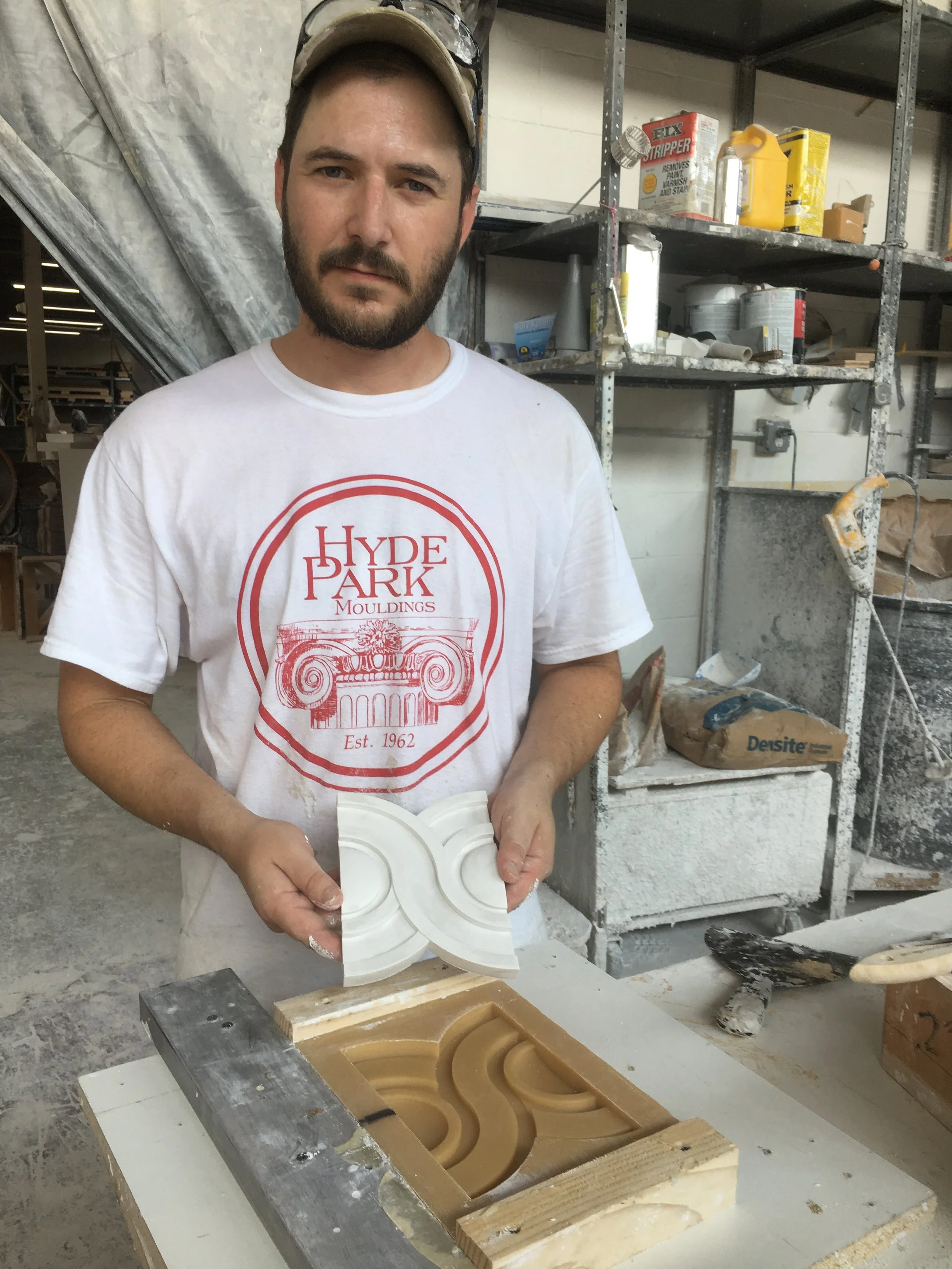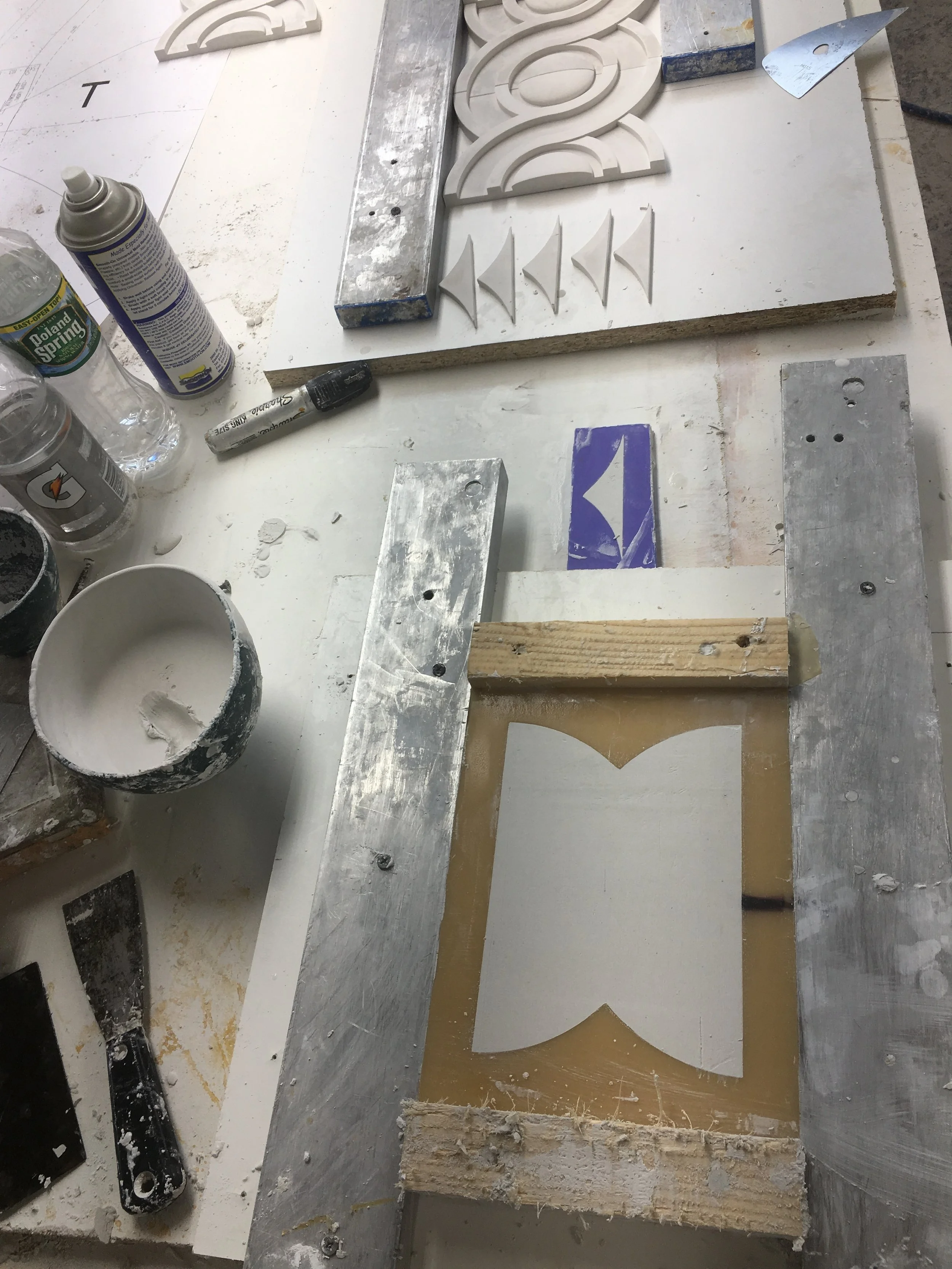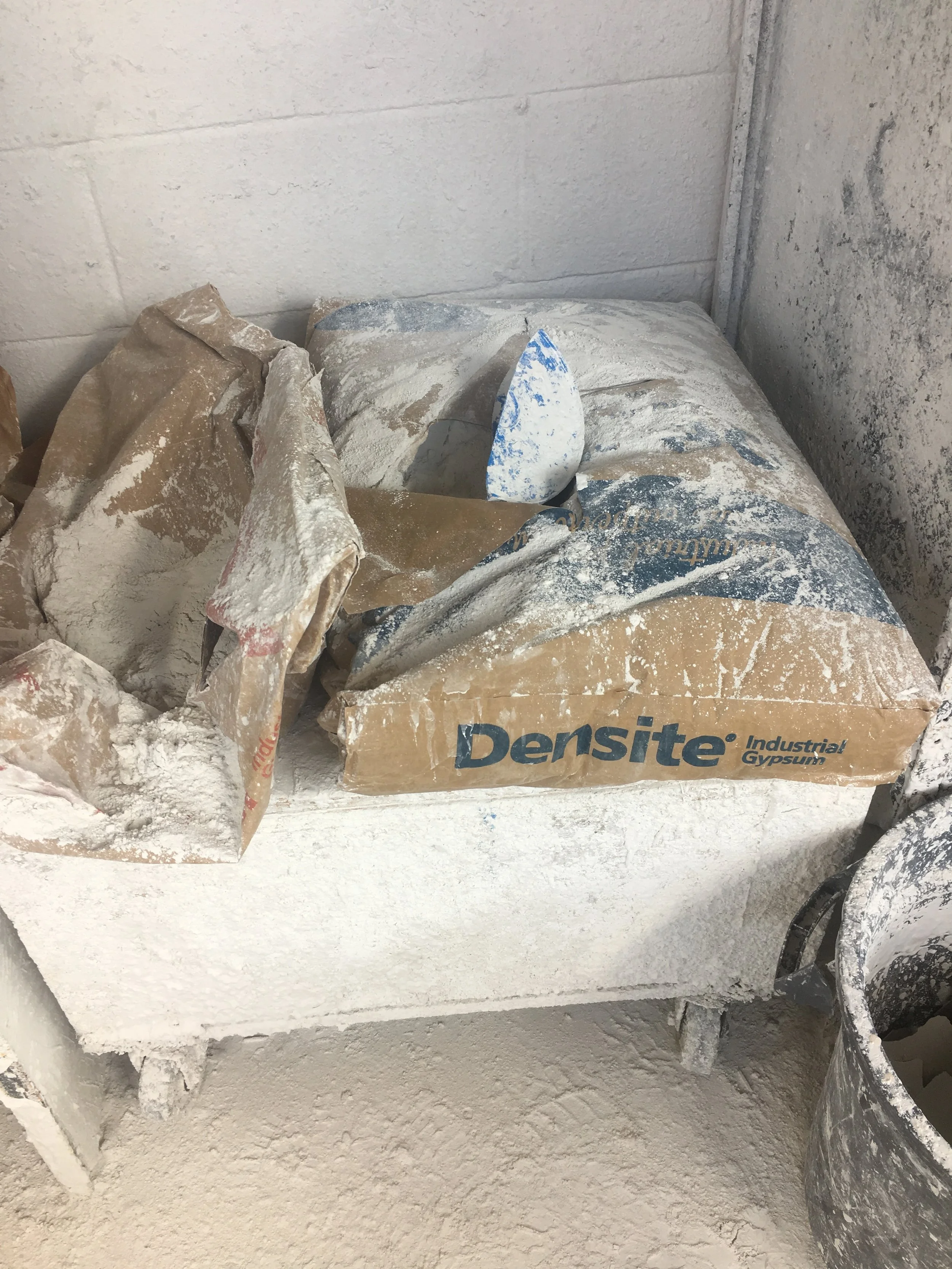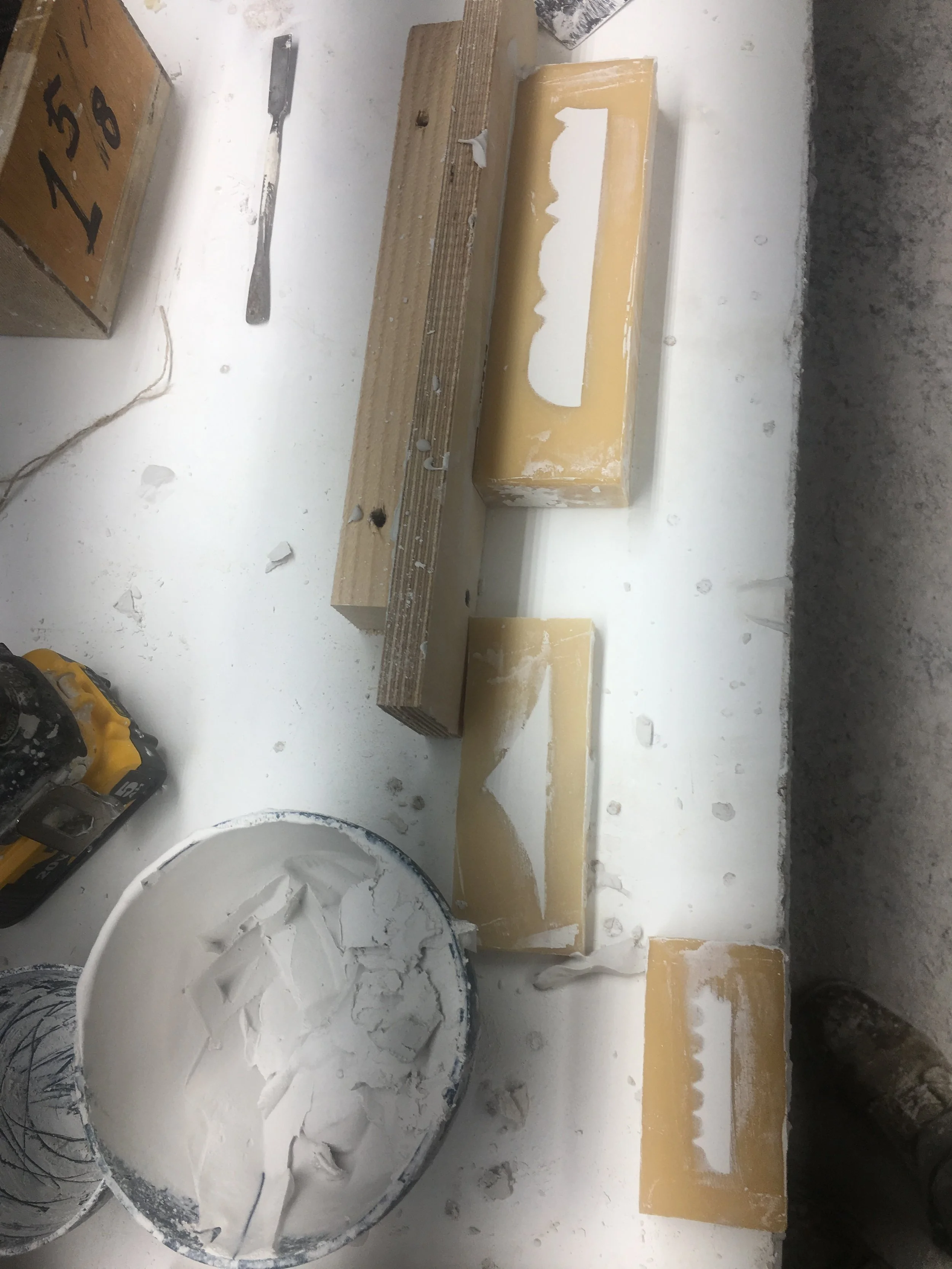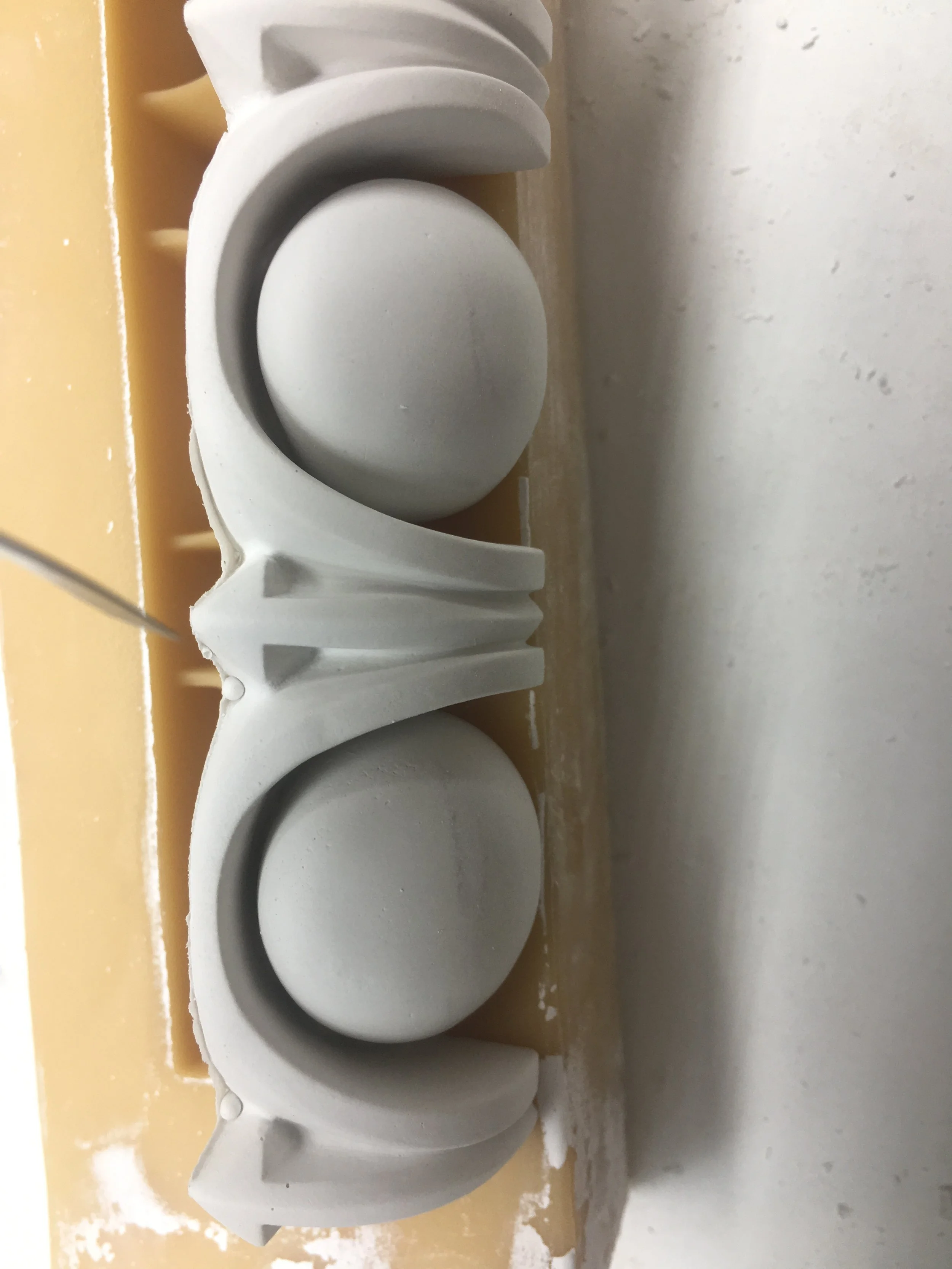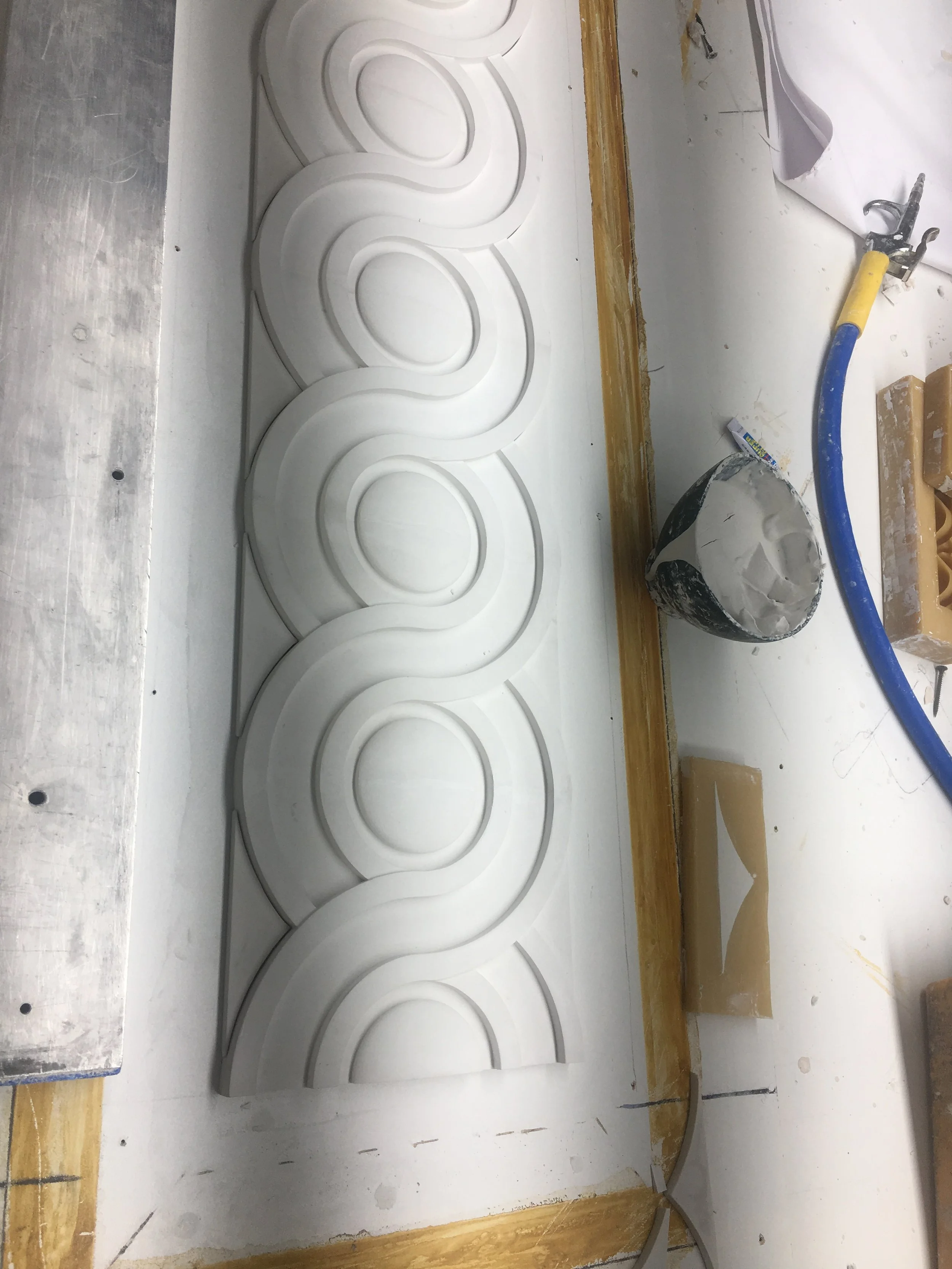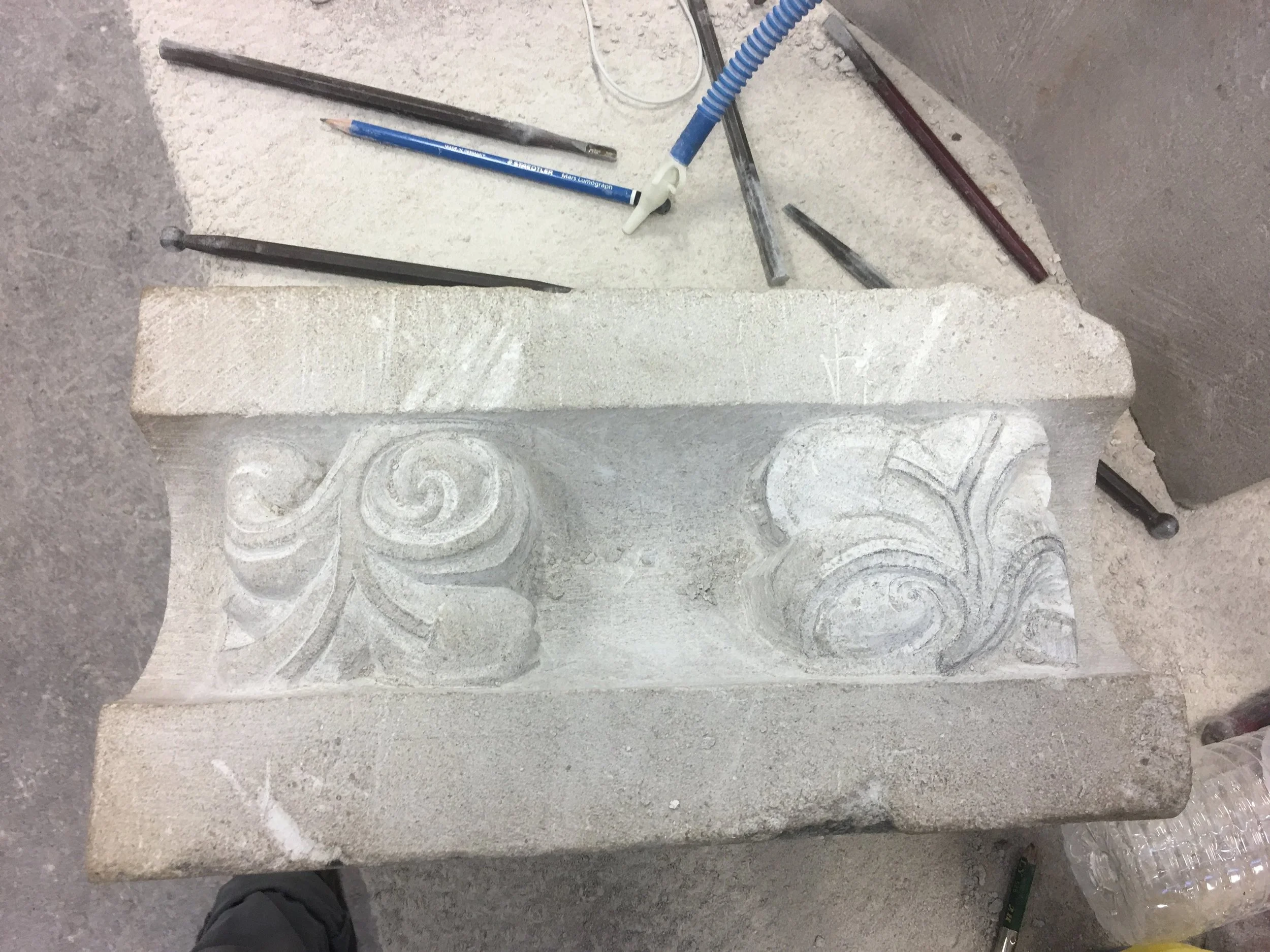Hyde Park Mouldings, Casting
This week I would be working on casting repeating details that would later be used to make a mould. Repeating designs can be attached together and then moulded at one time giving larger moulds that would speed manufacturing and installing as opposed to doing multiple smaller casts. I would get to use different types of plaster in this project as opposed to normal pottery plaster, for casts we would use plaster with some Densite mixed in. The Densite adds durability and strength to the casts, but speeds setting time.
It important to have the mould properly stabilized. After the plaster is poured it is then screeded over several times to remove excess plaster. When the plaster is still liquid it is important to run fingers or a brush along details to remove any air bubbles. Then more plaster is poured into the mould. The plaster is then allowed to set up for a short time and then screeded one or two final times to give a nice flat surface.
Densite is added to the plaster mix to give the neccesary strength for flat casts.
Here the different casts are assembled together to create a detail.
It is important to make sure the back surface is thoroughly screeded or the thin film of plaster left on the mould can cause breaking of small delicate casts.
Sometimes even with brushing the wet plaster into the mould an air bubble will still remain. these will have to be cleaned off later.
The individual casts assembled, and ready for moulding

